The Astilbe Bed
Where I prove that when I don’t mess with the plants in my garden they tend to flourish and do better without me.
It's easy to see why I call this bed the astilbe bed. The red astilbe loves it here mostly because of the mix of sun and shade by the back of the house. The red astilbe were part of the 2006 garden remodel. I’ve done nothing for them in terms of care and maintenance for seventeen years, which probably explains why they have flourished over the years. Lately they have begun to overgrow some of their plant neighbors, most notably the Zinger Sedge lining the front of the bed, so over the past 12 months I’ve been transplanting astilbe to other beds to give the sedge some room to breathe. Not to be picky, but these aren’t my favorite astilbe because they only get to their bright red (fabulous) color for a couple of weeks each season. I’m not sure what to do about it, but I do know that I haven’t bothered these plants for a long time and I’m nervous about messing with them. The rest of the time they are more of a rust color that doesn’t really pop to my eye, especially against the color of the dark brown mulch I use in the backyard beds.
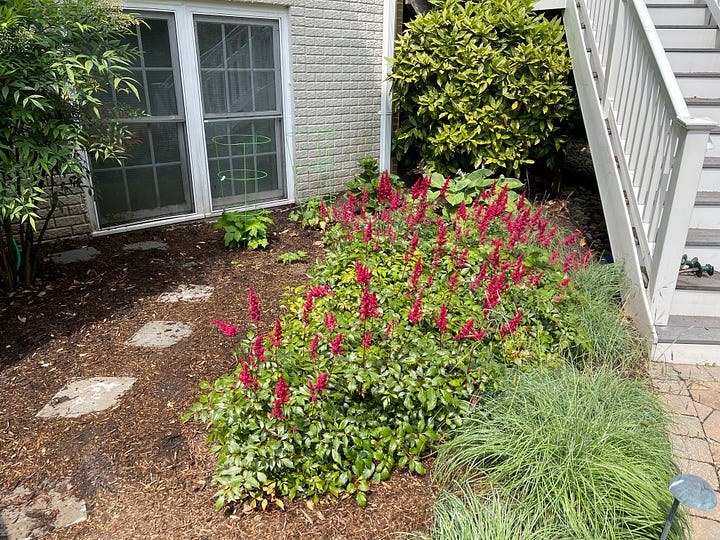
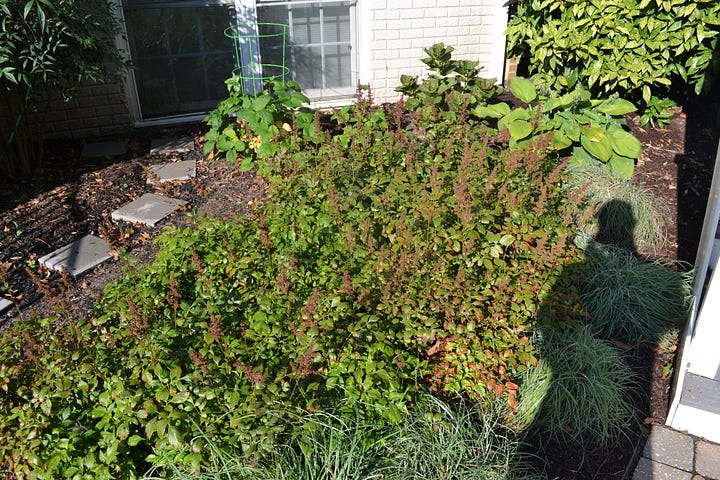
It’s kind of sad that these astilbe have been putting on a great show for years, but I didn’t notice it because you must walk out in the yard and actually pay attention to see these plants in full bloom. I plan to do the proper and necessary plant maintenance next spring and divide the plants, so they have more room to grow. I hope I don’t screw up what has been a success for many years. It’s amazing how well they’ve done all by themselves. My guess is I’ll have dozens of extra plants next spring to help make friends with the new neighbors…that is, if they like astilbe.
The Zinger Sedges have also done well. They were recommended as part of the 2022 redesign. They’ve grown so large that I’ve moved four plants to other beds. I think they make a beautiful border. I love my zingers and want to make sure the astilbe doesn’t overgrow them in the future. It’s a little weird that the sedges do so much better in this bed than in the back bed, which is right next to it against the house. I’m hoping the back bed sedges look like these plants next season.
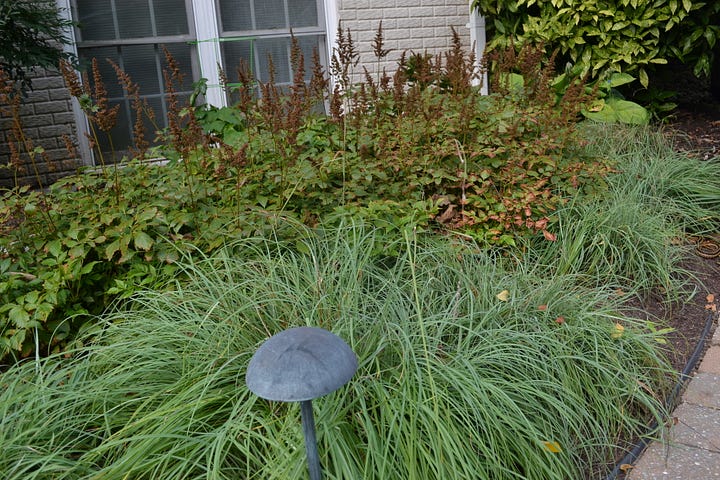

There were three elegans hostas originally in this bed, but they got so big that years ago my wife transplanted two of them under our back porch. The remaining plant was in the back center of the bed where it grew so large it took up a big portion of the bed. I wanted something more interesting for the centerpiece of the bed, so I moved it to the back right corner near the aucuba bush, or shrub, or whatever it's properly called. I’ve been surprised that the hosta hasn’t been eaten by deer in all of these years. I wonder if it is getting more sun than it likes in its new spot, because it’s significantly smaller than its two siblings under my back porch. I might be dividing this hosta plant, or more probably, the hostas under the porch, in the spring. Now that they’ve cleared out the arborvitae trees near the end of my driveway, I think there is more than enough room for an Elegans over there.
Pop Pop’s hydrangea was a gift from my father-in-law (his real name is Dean) a few years ago. It was a baby plant that I threw in the back of the bed. My guess is that it’s a big leaf hydrangea, or at least that’s what my PictureThis app suggests. It seems to be doing well growing there in the back of the bed, although it’s never given any sign of wanting to bloom. This is another plant that I wonder if it needs more sun. Next spring will be this plant’s third birthday, and if it doesn’t bloom, I’ll consider moving it. I’m also worried about how big it’s likely to get. Still, if it ever blooms it would be a beautiful addition to a bed where I worry about not having enough color in the late spring and summer.
The Honorine Jobert Anemones have an interesting story. First about the name. I recently found out that this plant is also called Windflower, which sounds just as romantic as anemone, but is easier to remember. And no, I can never remember “Honorine Jobert.”
When these four plants were originally delivered from the nursery, I immediately noticed that two of the four were much smaller and more frail than the other two and mentioned the difference to the crew chief in charge of my project for the day. He said that they would all look the same by the end of the season, and not knowing anything about anything, I accepted them. He was, of course, wrong, and the two plants are way behind in their development. To the credit of Sun Nurseries, when I presented my case, they gave me a refund for the two smaller plants, which are still alive and probably two years behind schedule. Waiting for these plants to catch up has been tough -- I’m told that patience isn’t my biggest gift -- but I expect great things from them by next spring. You can already see the plants beginning to spread and I would love for them to fill in the back of the bed with white and yellow fall color.

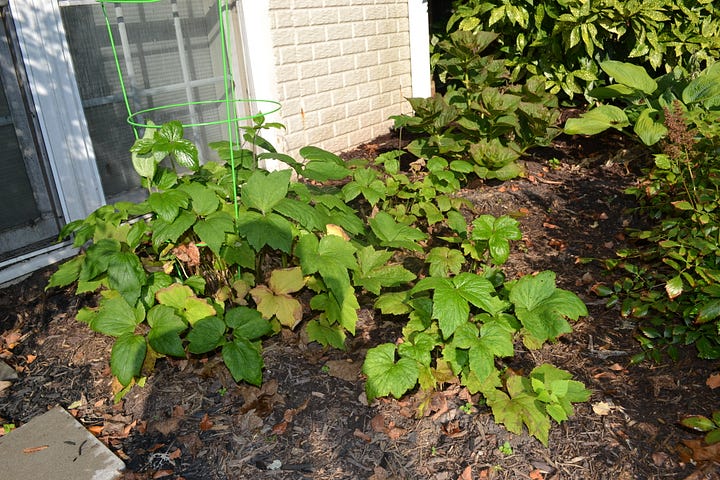
Last year the two bigger plants threw up some beautiful flowers which unexpectedly soared over the leaves of the rest of the plant, but both plants flopped, and I was disappointed in how they looked. I staked them both up with tomato cages and that helped. I wouldn’t be surprised if they didn’t need to be supported at all next year. I’ve discovered that plants that bloom in late August and September add great color to the garden that time of year, but I go crazy waiting for them to show up. This year’s anemones are no exception. Sounds like a Type A problem to me.
Did you notice the stepping stones in the bed? I installed them myself. It was a simple job for anyone else, but for me it was something new and different. If you can’t tell, I’m very proud of my stepping stones. In my totally objective opinion, they look great. If we get a cold winter, my guess is that frost will heave these steps out of place, and I’ll be fixing them next spring.
When Sasha, my designer at Sun Nurseries, did the original plan for the bed, she filled the space with a ground cover called creeping jenny. All I can say is that stuff is a nightmare, trying to take over the rest of the bed at lightning speed. I ultimately ripped all of it out and now can fill the space with a ground cover that I can control. I suppose this makes sense since I’m a Type A and being in control is very important to me. I might add a slower growing flowering ground cover, or some colorful Coral Bells as a contrast to the astilbe. I’m also thinking that Lenten Rose might do well to the right of the steps. I’ll be pondering this over the winter and hope to add some great color to the bed next spring.
It's time for us to move on. Next week we’ll have another life-changing article here at The Painful Education of a Type A Gardener.






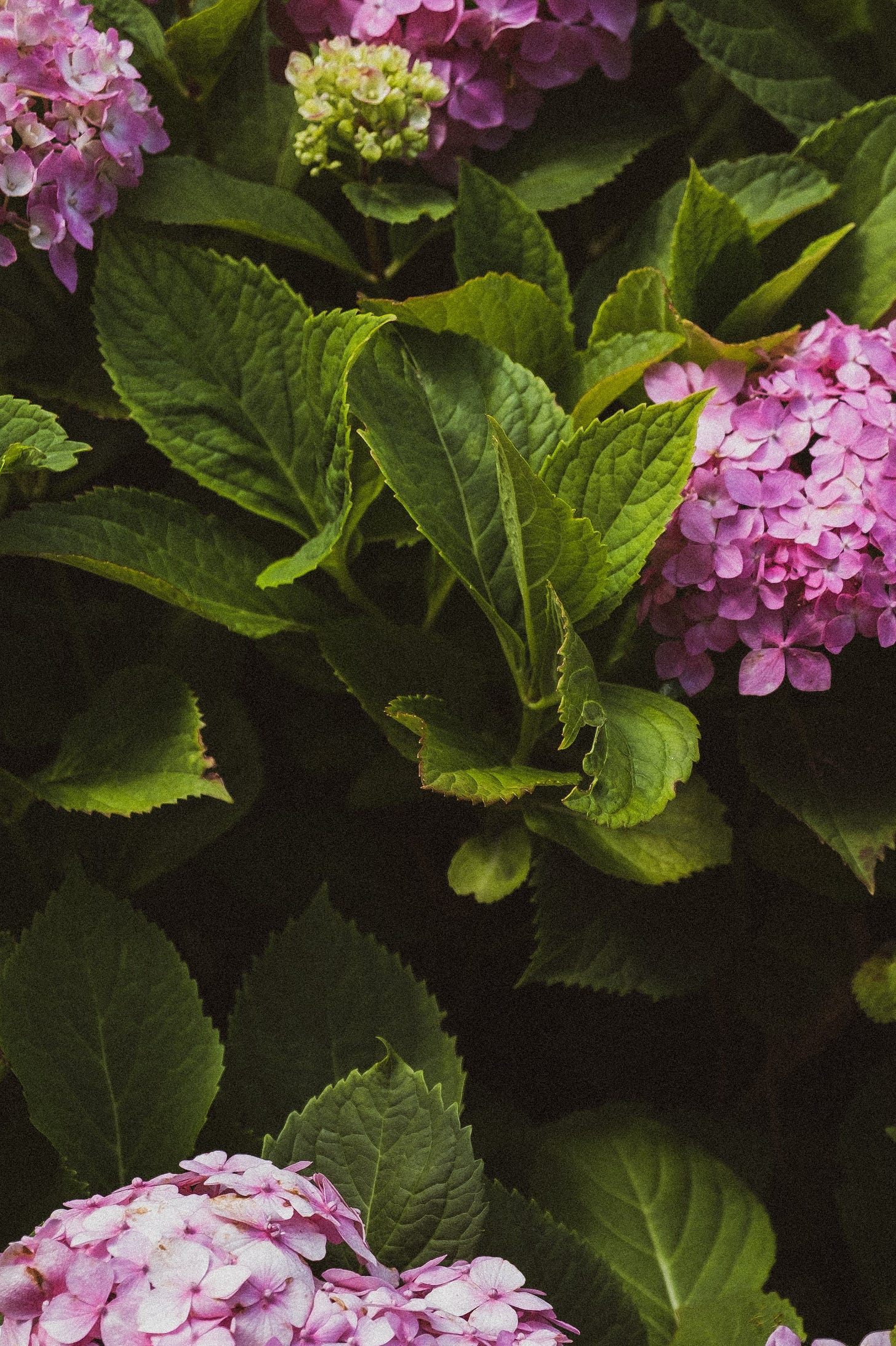
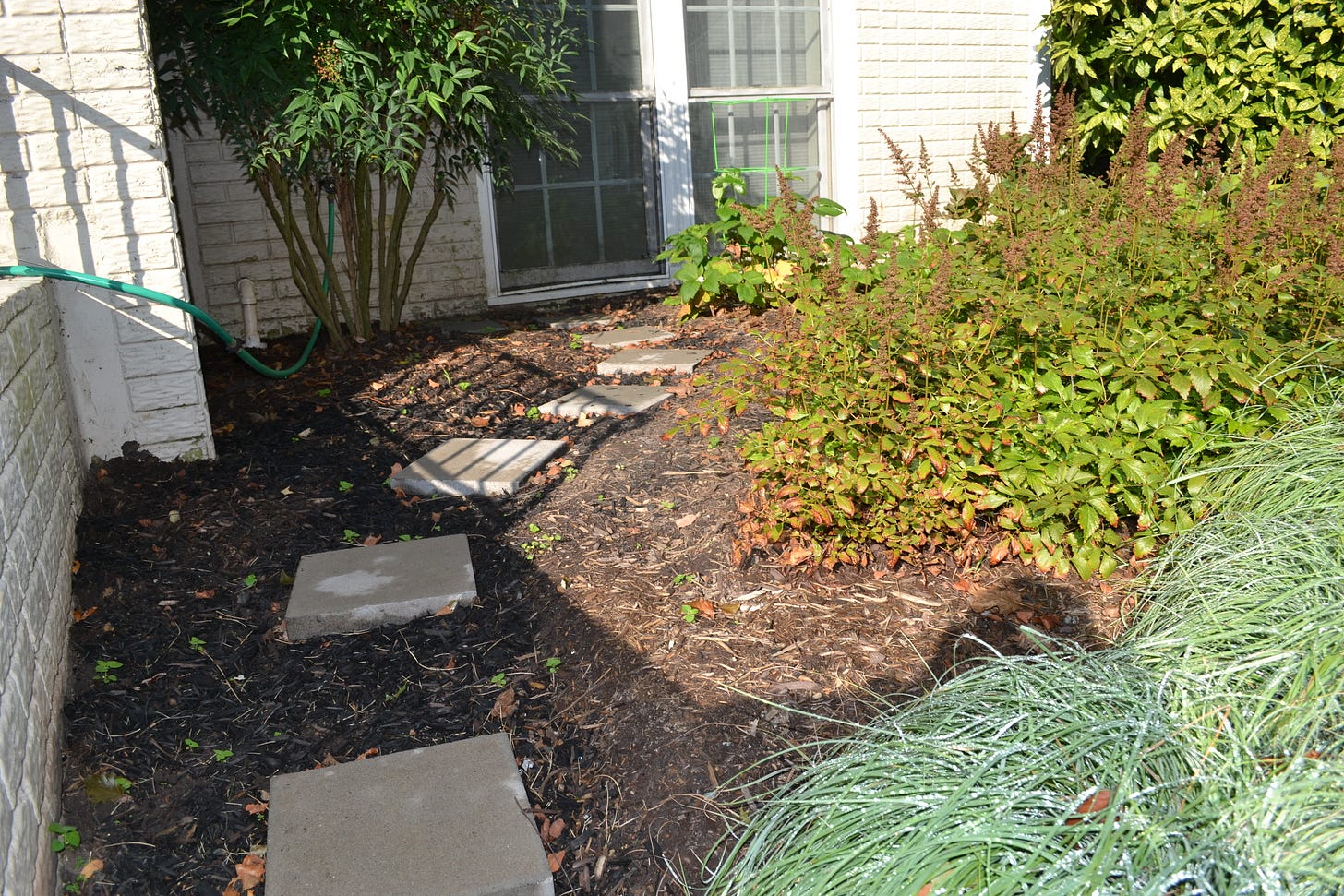
"Creeping Jenny....is a nightmare. "
What did you expect from a plant with a name like a Steven King novel?